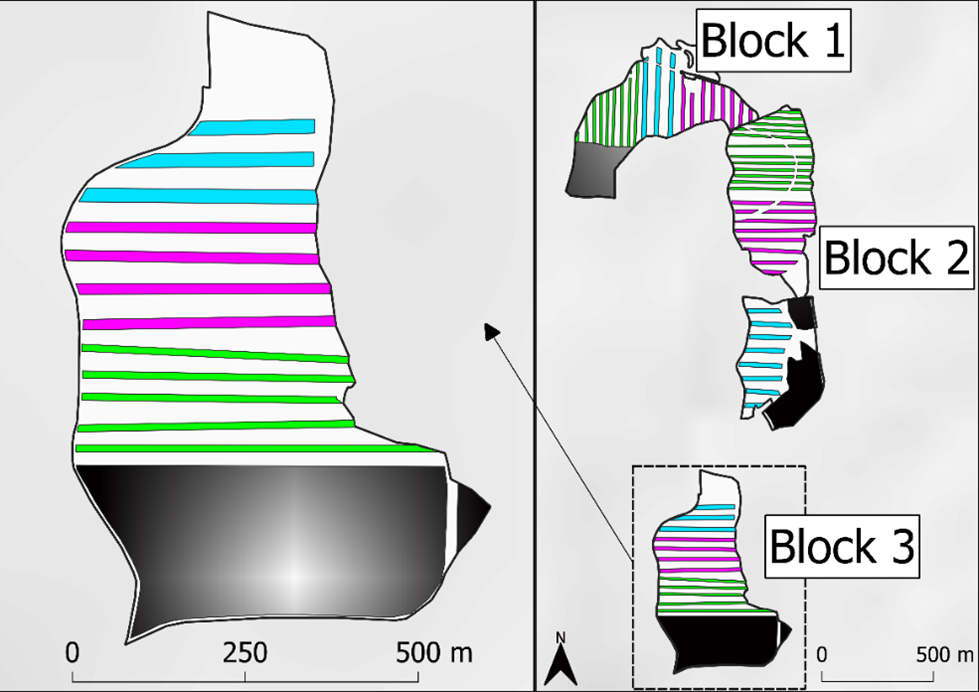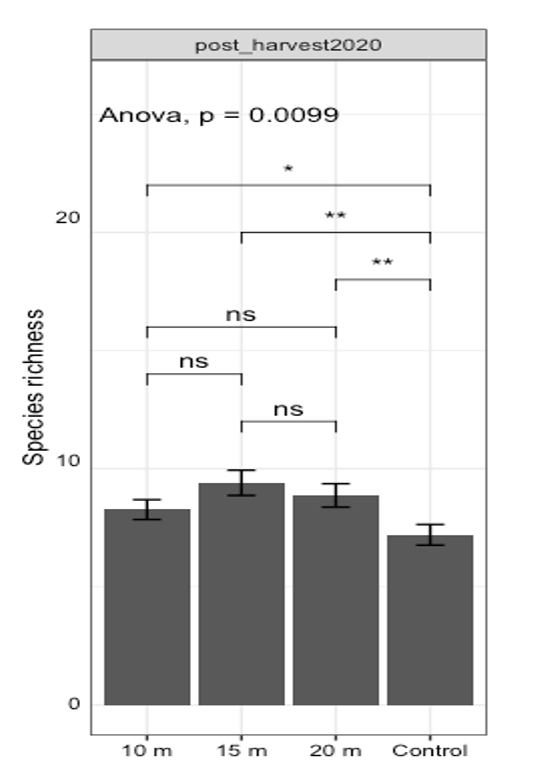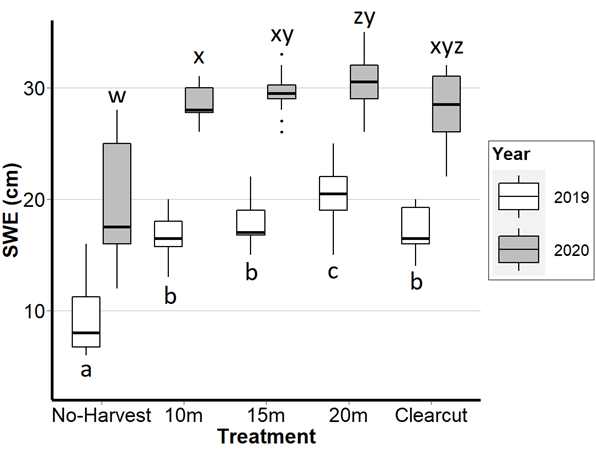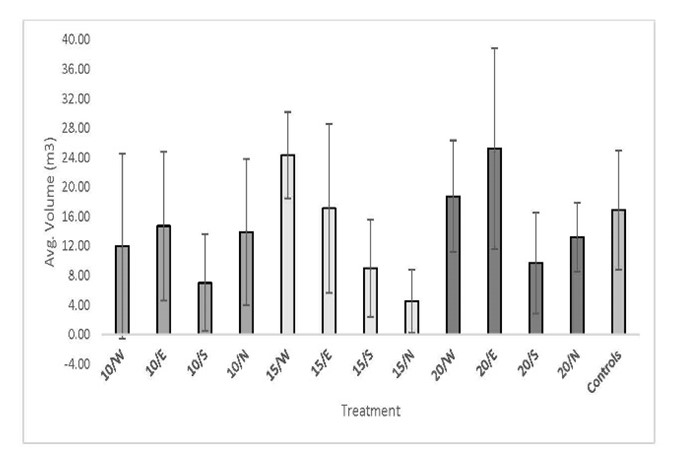Enhancing Forage Productivity in Silvopasture Systems
Project Title
Evaluating the Potential For Increased Forage Productivity in Mid-Rotation Forested Rangeland Sites Through an Integrated Forage, Cattle and Timber Management Approach
Researchers
Lauchlan Fraser, Ph.D. lfraser@tru.ca
Lauchlan Fraser Ph.D., David Hill Ph.D., John Church Ph.D. (Thompson Rivers University); Lisa Zabek, (British Columbia Ministry of Agriculture); Harold Hetherington, Kevin Derow (British Columbia Ministry of Natural Resources); Grant Glessing (Tolko Industries Inc); Kevin Boon, (BC Cattlemen's Association)
| Status | Project Code |
|---|---|
| Completed March, 2022 | FRG.20.17 |
Background
Agroforestry (or silvopasture) is a way to manage land that combines forestry with agricultural crops and livestock. This system not only increases agricultural and forestry production, but also has many benefits including, economic, environmental and social. Having livestock graze temperate forest systems is a common practice worldwide. Production gains in agroforestry are possible through the efficient capture and utilization of light, water, and soil resources. While research into animal/tree interactions has been conducted in other locations globally, data related to forage and timber productivity, wildlife use, carbon sequestration, plant diversity, and soil water availability resulting from silvopastures in British Columbia is lacking. This study focuses how combining timber and grazing cattle impacts forage and timber yield, forage quality, correlation of aerial footage with measured productivity, carbon sequestration, plant diversity, soil health, water quality, and snow melt.
Objectives
- To assess the potential for silvopasture, created in mid-rotation conifer stands, to enhance forage productivity (yield and quality) and inject additional forage into the forest-grazing landscape.
- To assess timber productivity in the integrated forage-timber model relative to conventional practice.
- To evaluate co-benefits such as carbon sequestration, plant diversity and soil water availability relative to conventional management strategies.
What They DID
An operational-scale pilot was established June 2018 on 3 mid-rotation forested rangeland sites in the interior of BC in a randomized complete block design with 4 treatments. The dominant tree is lodgepole pine, and the dominant understorey vegetation is pinegrass, which has limited forage value for cattle and wildlife. Variations on strip width (10, 15 and 20 m) were compared to a non-treated control (Fig. 1). After harvest, the logged strips were cleared of woody debris and the site was scarified for seeding of forage crops. In October 2018, an agronomic mix was sown at 12 kg/ha: 30% meadow bromegrass, 30% orchardgrass, 30% intermediate wheatgrass, 10% white clover. Research activities are primarily focused on the comparison between different strip-width thinning treatments.

What They Learned
Forage: In 2020, Biomass of total dry forage was greatest at 15 and 20 m strips, moderate at 10 m strips and at the lowest level in control, unharvested (Fig. 2a). Species richness in 10, 15 and 20 m strips were greater than the control (Fig. 2b).


Snow accumulation: Peak SWE (snow water equivalent) increased with strip-width during both years. The narrowest strips (10 m) increased snow accumulation relative to non-harvested controls by 81 % in 2019 (P<0.00001) and 42 % in 2020 (P<0.00001). There was a trend for 20 m strips to retain more snow than the clearcut. The 20 m strips had a peak SWE 17 % greater than the clearcut in 2019 (P=0.003), and 8 % greater in 2020 (P=0.07) (Fig. 3).

Tree height and volume: As seen in Figure 4, height of trees is consistent between 10 and 20 m widths, and within aspects at 10 and 20 m widths. However, height of trees at 15 m width showed significantly lower values in north-facing aspect compared to all other treatments. Unlike height, there is significantly more variation in volume by treatment (Fig. 5). The 10/S and 15/N had the lowest volumes, while 15/W and 20/E had the highest.


What This Means
Forage yield results obtained post-harvest 2020 supported our hypothesis. In addition to high biomass yield obtained in the widest strips, our results showed that thinning in general adds the abundance, richness and diversity of forage. Our results were inconclusive regarding whether strip thinning at 10 m, 15 m or 20 m width can potentially improve soil carbon sequestration as well as nitrogen storage and create more productive and resilient ecosystems for livestock and wildlife. The various widths of harvested strips in the commercial thinning treatments did significantly influence snow accumulation, melt rates, and time to total snow disappearance. These effects were further influenced by the geographical orientation of the strips (north-south vs east-west).